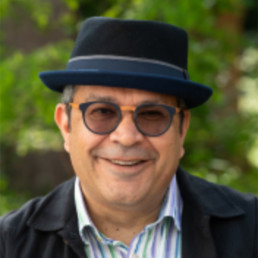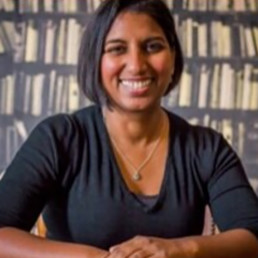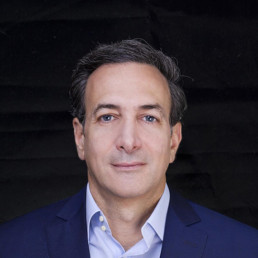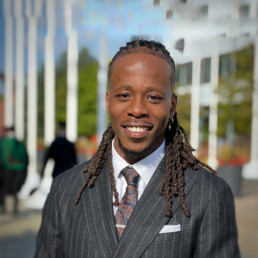Observations on the implementation of Relationships, Sex, and Health Education (RSE) in an English Primary School

Written by Alex Baird
they/them
Before moving to the Higher Educator sector seven years ago, I worked in various schools for over twelve years, latterly as Director of Sport. At the University of Bedfordshire I am a Senior Lecturer in Sport and Physical Education, an EDI Lead, and the Vice Chair of the LGBTQ+ Alliance staff network. I have just finished an EdD at UCL and the research I write about here constituted my EdD thesis.
My research took place in a primary school in Greater London during the summer term of 2021, just as Relationships and Health Education (including the new LGBT content) had become mandatory. At this time, Covid-19 restrictions were lessening though some protocols were still in place and the effect of lockdowns on both pupils and staff was evident. The school has no religious affiliation but the majority of pupils are Muslim, with a high proportion of English as an additional language (EAL) learners and higher than (the national) average of pupils receiving free school meals (FSM). The research was designed to appreciate how teachers feel positioned and work alongside them to create and teach an inclusive and effective RSE curriculum. Participants included five (non-LGBT identifying) females from the school who held a range of positions, roles, and experience but had all previously taught RSE and were currently teaching in Key Stage 2. Participants were asked to reflect upon RSE and the school culture via semi-structured online interviews. RSE lessons and other subject lessons were observed. Teachers’ reflections of lessons were gathered after observation through an informal discussion.
In interviews teachers expressed a commitment to a rights-based approach in RSE and highlighted the value lessons offered to facilitate dialogue with pupils. Lesson observations revealed a cautious approach to the age at which certain topics (e.g. puberty and conception) were covered and when these topics were covered, dialogue did not deviate from the purchased curriculum PowerPoint slides. The culture and routines of RSE lessons closely resembled other subject lessons observed, that is pupils engaged and valuing the subject, generally sitting in their allocated class seats but the authority and attention remaining on the teacher at the front of the class. Teachers wanted to offer fixed, clear and definitive truths, reinforcing good behaviour and deeming some pupils’ questions as inappropriate. Teachers remained uncertain about what personal opinions they could express whilst still adhering to professional conduct. Lessons which were only 45 minutes in length, shorter than Mathematics and English lessons observed, left teachers often hurrying the pace to try to cover the content. Lesson observations highlighted that gender norms are still being powerfully reinforced including the use of gender stereotypes in scenarios and segregated sex education lessons which send these messages overtly and covertly to pupils.
In light of the current heated and polarising debates surrounding LGBT lives in the UK, I would like to stress my call to rethink how RSE is taught should not be taken to mean it should not be taught. A fuller range of pedagogical approaches that include a critical and postmodern orientation are required to recognise pupils’ agency, their pre-existing knowledge, their emotions, and to the likely presence of pupils in LGBT families and pupils who are or may come to identify as LGBT. Effective RSE remains dependent upon schools providing sufficient training for staff, listening to pupils, and communicating effectively with all parents/carers to address misconceptions or issues. Actualising and normalising LGBT themes needs to go beyond merely a bullying discourse to seek to critique broader school culture and practices.
A portrait of the teaching of the British Empire, migration and belonging in English secondary schools

Written by Dr Jason Todd
Jason is a Departmental Lecturer at the Department of Education at the University of Oxford and currently leads the PGCE History programme. Before joining the University of Oxford, he taught history for 19 years in various London state schools, including time as an Assistant Headteacher in a Special Needs school.
I am working on a research project aiming to provide an empirical portrait of current teaching and learning around the interconnected themes of empire, migration and belonging in England’s secondary schools. This project’s aim is a simple one: to support teachers with the teaching of the British Empire, migration and belonging.
Histories of empire and migration are fundamental to understanding modern Britain including how we make sense of issues of belonging and identity. Recent events, from Brexit in 2016, to the Windrush Scandal in 2018 and the Black Lives Matter activism of 2020, have drawn attention to the interplay between the past and the present in dramatic ways, highlighting not only the salience of these histories but also their contested nature.
Despite its importance, there is a shared acknowledgement at the heart not only of recent campaigns from organisations such as the Runnymede Trust and Black Curriculum Project but also emphasised within the Commission on Race and Ethnic Disparities report, that there is currently no credible, comprehensive evidence base from which to reliably judge the extent to which today’s secondary students are being taught about the history and legacies of the British empire at all, let alone what they are being taught, in what manner and why. There is however evidence that teachers themselves have identified the need for targeted professional development support and training in this area.
It is precisely in response to this demand that I, as lead author of a letter to the Times in 2020, reiterated the TIDE-Runnymede recommendation that the government invests in better supporting teachers to confidently tackle these complex and potentially contentious themes. Both the Times letter and TIDE-Runnymede campaign made explicit reference to work from the UCL Centre for Holocaust Education’s internationally renowned and distinctively research-led approach to transformative teacher professional development. The Portrait of the teaching of the British Empire, migration and belonging research project was thus conceived as a crucially important intervention towards ultimately supporting teachers by first providing a much needed, robust and comprehensive, empirical evidence base. Our survey is one tool we are using to examine issues associated with teaching the British Empire, migration and belonging in schools and we encourage teachers of all subjects to complete it. https://redcap.idhs.ucl.ac.uk/surveys/?s=L33D9YEX7KRET3EX
We think that this project represents a tremendous opportunity to understand and shape the way young people engage with the enduring legacies, and ongoing debates, regarding the British Empire. Given the complexity of the topics, and the contested nature of many current debates, our desire is to offer nuance and illumination.
You can find out more about this project on our website https://portraitemb.co.uk/
These potent legacies shape the lives of millions, deeply affecting our sense of identity and belonging. It is critical that we forge paths towards better collective understanding of these subjects, however controversial. Confident and informed teachers are, of course, central to this.
Jason Todd is Co-Lead Investigator on a collaborative research project “A portrait of the teaching of the British Empire, migration and belonging in English secondary schools.” which brings together scholars from IOE, UCL’s Faculty of Education and Society and the University of Oxford’s Department of Education.
Beyond the Wall of Diversity

Written by Jonathan Lansley-Gordon
Jon studied theoretical physics at Imperial College London, before embarking on a teaching career in secondary and further education. Co-founder of The Blackett Lab Family – a national network of UK based Black physicists – he is passionate about widening access to STEM for traditionally excluded and underrepresented young people. He is a writer and series editor for Oxford University Press, authoring the Teacher Workbook for AQA GCSE Physics. A former Assistant Headteacher and school governor, he now runs Physics Forward – an organisation that provides support for schools, trusts and higher education institutions on all things science, curriculum, and DEI strategy.
Scenario: the head of physics wants to celebrate diversity in the curriculum. They create a ‘wall of diversity’ for the department, showcasing various historic and current black and brown physicists.
I sometimes give keynotes that get the audience to discuss this scenario. More often than not, there’ll be a few nervous stares back at me – almost expecting to be told that this is something terrible and ignorant.
I quickly reassure my fellow science educators that this particular case study, IMO, is by no means an example of something ‘bad’. Actually, I think – as a starting point – raising the profile and visibility of racially diverse physicists is positive for a host of reasons; black and brown people are typically absent from science curricula (as is the case across many other subjects), which can reinforce the implicit notion that science – and especially physics – is reserved exclusively for people who are [insert dominating characteristics here].
The following questions provoke some deeper thought around this scenario:
- Is the intention behind this ‘wall of diversity’ clear to the students?
- Does the wall showcase the achievements and contributions of the featured scientists, alongside (and contextualised by) their ethnicity?
- Is this project the only reference to diversity, or the only mechanism by which conversations about diversity is introduced in the classroom?
- Who contributed to the design and people featured?
- How / when will the project be revisited and refreshed?
- In what ways is diversity related to gender / age / sexual orientation / neurodivergence / disability acknowledged and celebrated elsewhere?
- Does this sit within a wider departmental strategy to incorporate diversity and inclusion?
I won’t pretend that the secondary physics curriculum lends itself to easy and natural opportunities to explore themes related to identity and representation. There is a lot of content to get through: energy, forces, waves, gases and electricity don’t immediately conjure inspiration of thought related to human identity. So, in some ways, it’s understandable that we might turn to “curriculum accessories” – people posters – at the risk of students sussing out our tokenistic nods to inclusion.
This is not to say there is no way to go about doing it authentically. Subject content is one of multiple lenses we can use when thinking about diversifying a physics curriculum – and indeed, the wider curriculum. How the content is delivered (teaching, learning and assessment techniques), and student voice (surveying their attitudes, values and beliefs with respect to physics) are a couple of other lenses that can help frame approaches to weaving inclusive themes through the curriculum.
At Physics Forward, we give physics and science educators the thinking tools to develop strategic approaches and practical resources to creating a diverse and inclusive curriculum through these and other lenses. Get in touch to have a chat about how we can support you and your team do the same!
Is there a hierarchy of protected characteristics?

Written by Hannah Wilson
Founder of Diverse Educators
One of the questions we regularly ask in our DEI training for schools, colleges and trusts is which of the protected characteristics are visible within your context.
This question is deliberately wide and can be interpreted in a couple of different ways:
- Which of the 9 PCs are visible? i.e. which ones can we see as some are hidden/ invisible.
- Which of the 9 PCs are visible? i.e. which are present in our community and thereby which are missing or do we not have/ know the data to confirm they are present.
- Which of the 9 PCs are visible? i.e. which are being spoken about, invested in, have we received training on.
Often people ask do we not mean – which is a priority? And we emphasise to focus on visibility and explain the gap between intention and impact as there is likely to be some dissonance between what is happening and how it lands.
The reflections and discussions across a full staff will surface some of the disparities of what is being paid attention to. Moreover, it will also highlight the difference in perspectives across different groups of staff – groups by role/ function and groups by identity.
A key thing for us to reflect on, to discuss and to challenge ourselves to consider is that there are nine protected characteristics – so are we thinking about, talking about, paying attention to all of them simultaneously? Are we balancing our approach to create equity across the different identities? Are we taking an intersectional lens to consider who might be experiencing multiple layers of marginalisation and inequity?
We encourage schools to lean into DEI work in a holistic and in an intersectional way, as opposed to taking a single-issue approach as our identities are not that clean cut. We worry that some organisations are focusing on one protected characteristic per year, which means that some people will wait for 8-9 years for their identity to be considered and for their needs to be met. This is also a problem as we generally spend 7 years in a primary context and 7 years in a secondary context so all 9 would not be covered in everyone’s educational journey.
Trust boards, Governing bodies, Senior leader teams do not sit around the table and decide that some of the protected characteristics are more important than others, but there will be a perception from outside of these strategic meeting spaces that there is a hierarchy. i.e. different stakeholders will have differing opinions that in this school we think about/ speak about/ pay attention to/ deal with XYZ but we do not think about/ speak about/ pay attention to/ deal with ABC.
Another thing to consider about the perceived hierarchy is regarding which of the protected characteristics we are expected to log. If all 9 of the protected characteristics are equal, why do schools only need to log and report on two of them for the pupils’ behaviour and safety – we are expected to track prejudiced-based behavioural incidents of racism and homophobia? Does this mean that transphobia, islamophobia, ableism and misogyny are less important? Does this mean we are holding the student to account but not the staff?
One solution to this specific imbalance is to move from a racist log and a homophobia log to a prejudice log. A log that captures all prejudice, discrimination and hate. A log that captures all of the isms. A school can then filter the homophobia and racism to report upwards and outwards of the organisation as required, but the organisation’s data will be richer and fuller to inform patterns of behaviour and intervention needs.
CPOMs and other safeguarding and behaviour software systems enable you to tailor your fields so see what capacity yours has to add in extra fields. You can then log all prejudice and track for trends but also target the interventions. We have been working with a number of pastoral leaders and teams this year to grow their consciousness, confidence and competence in challenging language and behaviour which is not inclusive and not safe. We are supporting them in making their processes and policies more robust and more consistent to reduce prejudice-based/ identity-based harm in their schools.
Another consideration alongside the student behaviour logging and tracking is to also consider the logging of adult incidents. Do our people systems capture the behaviours e.g. microaggressions and gaslighting that the staff are enacting so that these patterns can also be explored? Do our training offers for all staff, but especially leaders and line managers empower and equip them to address these behaviours?
So as we reflect on the question: Is there a hierarchy of protected characteristics?
Consider how different people in your organisation might answer it based on their unique perspective and their own lived experience. And then go and ask them, to see how they actually respond so that you become more aware of the perception gap – if we do not know it exists, we cannot do anything about it – and the learning is in the listening after all.
"How do we decide when to teach the names of private parts in Primary School?"

Written by Ian Timbrell
Ian is an education consultant and trainer, supporting schools develop their provision for LGBT+ pupils and their RSE curriculum. He has worked in education for 15 years; including as a class teacher and a deputy head teacher.
Debating whether to teach the names of genitals in Foundation Phase/Stage education (ages 3-7) is a nuanced discussion that encompasses considerations of child development, cultural norms, parental preferences, and educational goals. Making this discussion more complex is that in most countries (England and Wales included), when to introduce the names of genitals in Relationships and Sexuality Education (RSE) is not specified to a single age, but within a range (generally 3-11). In both England and Wales, schools are expected to teach the names of body parts, but which body parts, in which order and at what age, are not referenced. This is needed to provide schools flexibility to teach children at a stage appropriate to them, but has also resulted in a wide range of interpretations with some schools introducing the terms as young as 3, with other schools only teaching them when introducing lessons on puberty in upper KS2. I get regular questions about a particular RSE providers who provide lesson plans on the names of genitals in year 1. The rationale given by the organisation is not based in research, but in their own experience and through conversations with practitioners and so although a scheme has this lesson in, there are considerations that need to be made when deciding when to follow this guidance.
One of the reasons that it is difficult to make firm decisions about when to introduce terminology is the difficulty of finding peer-reviewed research in this area. For the most part, schools are led by either out of date research or guidance from organisations that is based on opinion and experience, rather than corroborated research. Introducing vocabulary in RSE and in areas of diversity is part of many studies and research projects and it is expected that in years to come, we’ll have more clarity in this area.
So with these difficulties in mind, what should schools do and how can we make decisions that is best for our pupils?
Arguments for Teaching Genital Names in the Foundation Phase/Stage:
- Promoting Body Positivity and Autonomy: Teaching children accurate anatomical terms for genitals fosters a healthy understanding and acceptance of their bodies. By using correct terminology, some believe that children develop a sense of body positivity and autonomy, enabling them to communicate effectively about their bodies and recognise inappropriate touch.
- Facilitating Safety and Awareness: Knowledge of proper anatomical names empowers children to articulate discomfort or instances of abuse more accurately. It is suggested that learning the correct names for genitals, like any other body part, have names helps break down taboos surrounding discussions of sexuality and promotes a culture of safety and awareness.
- Preventing Misinformation: Using euphemisms or avoiding discussions about genital names may lead to confusion and misinformation. Children are naturally curious and may seek answers from unreliable sources if not provided with accurate information in a safe and supportive environment.
- Normalizing Discussions about Sexuality: Introducing genital names in early education may usualise discussions about sexuality and reproductive health. When presented in an age-appropriate manner, such conversations may lay the foundation for future learning and promote healthy attitudes towards sexuality and relationships.
Arguments against Teaching Genital Names in the Foundation Phase/Stage:
- Cultural Sensitivities and Parental Preferences: Some parents may feel uncomfortable with the idea of their young children learning genital names in an educational setting. Cultural norms, religious beliefs, and personal values vary widely, influencing parental preferences regarding what and how topics related to sexuality are addressed in early education. Introducing the genital names without the support of parents and guardians could cause conflicts with and between home and school.
- Developmental Appropriateness: Critics argue that introducing genital names at too young an age may be developmentally inappropriate and potentially confusing for children. They suggest that focusing on broader concepts such as body boundaries, personal safety, and self-respect may be more suitable for early childhood education. There is also the risk that it may not be appropriate for pupils with certain ALN/SEND at a certain time, or that the resources don’t take into account their individual needs.
- Respecting Family Dynamics: Education systems must respect the diversity of family structures and dynamics. Some parents prefer to address topics related to sexuality and anatomy within the family unit, tailoring discussions to their child’s individual readiness and comfort level.
- Risk of Misinterpretation: Critics caution that discussing genital names in early education may inadvertently sensationalise or overemphasize the significance of genitals, potentially leading to misunderstandings or discomfort among children and parents.
Finding a Middle Ground:
In navigating this issue, finding a middle ground that respects diverse perspectives while prioritizing children’s well-being is essential. Educators and policymakers can consider the following approaches:
- Consult with parents and experts: Engage parents, carers, and experts in child development, psychology, and education to gather insights and perspectives on the issue. Work with the community to develop an approach that works for your school, not because a scheme dictates it.
- Plan for individuals: Do not take a blanket approach to teaching. Consider whether every pupil is ready and what reasonable adjustments need to be put into place for certain pupils.
- Provide opt-out options: When permitted by the curriculum, offer parents the opportunity to opt their children out of specific lessons or discussions related to genital names, respecting their autonomy and preferences.
- Emphasise sensitivity and inclusivity: Approach discussions about genital names with sensitivity, inclusivity, and cultural awareness, acknowledging diverse perspectives and beliefs within the community.
The debate over whether to teach genital names in early childhood education reflects the broader discourse surrounding sexuality education, child development, and cultural sensitivities. The review of RSE in England may provide additional transparency around this issue, but until then, we have to use our professional judgement and work with all stakeholders to ensure that our children get quality RSE and are safeguarded against harm.
Empowering PSHE Leadership: Leading with DEI Principles

Written by Malarvilie Krishnasamy
Malarvilie is a seasoned leadership consultant, coach, and trainer with over 20 years of experience in education. As a former history teacher and senior leader, she passionately advocates for coaching as a catalyst for transforming school cultures. Malarvilie offers accredited courses, endorsed by The Institute of Leadership, which develop emotional intelligence and assertive leadership skills. Her reflective and supportive programmes enhance staff morale and well-being, promoting humanity in leadership. A vocal proponent of equity, diversity, and inclusion, she actively engages as an ally through speaking engagements, workshops, and amplifying the work of others. Malarvilie is also deeply committed to promoting Personal, Social, Health, and Economic (PSHE) education, recognising its pivotal role in nurturing well-rounded individuals.
I’m excited to tackle a topic that’s not just important but essential in education: leading PSHE with a DEI (Diversity, Equity, and Inclusion) lens. As educators, we know that PSHE isn’t just about teaching facts; it’s about nurturing well-rounded individuals who are equipped to navigate the complexities of life. That’s why it’s crucial to infuse DEI principles into our PSHE curriculum, acknowledging and respecting the diverse cultural backgrounds and experiences of our students. Join me as we explore how embracing DEI principles can transform PSHE education and create a more inclusive learning environment for all.
In many cultures, discussions about puberty, relationships, and sexual education may not happen at home. This leaves young people to rely solely on their friends or inaccurate information from the internet. This highlights the importance of PSHE education as a reliable source of accurate information. By providing comprehensive and inclusive PSHE/RSE in schools, we can ensure that all young people have access to the correct information, regardless of their background or cultural context.
Moreover, fostering an inclusive environment in PSHE lessons creates a safe space where students feel comfortable discussing their experiences and asking questions. This helps break down barriers and ensures that every student feels valued and supported in their journey through puberty and relationships, not just in terms of biological changes but also emotional and social aspects.
But leading PSHE isn’t just about delivering lessons; it’s about cultivating a whole-school approach to well-being and inclusivity. This involves considering staff values and providing them with comprehensive training sessions to navigate sensitive topics effectively, ensuring alignment with the values of the school, the curriculum, and the 2010 Equality Act. Staff members, while bringing their own values, must understand and adhere to the principles outlined in the Act, which mandates the promotion of equality and diversity within educational settings.
Additionally, understanding local and national statistics regarding teenage health issues, such as drug use, alcohol misuse, underage sex, lack of condom use for teenagers, and teenage pregnancies, equips educators with evidence to emphasise the importance of PSHE education. By sharing this information and ensuring staff awareness of their duty as PSHE teachers within the British curriculum, we can empower them to confidently and effectively deliver PSHE education, thereby supporting the well-being of our students.
But PSHE leaders often get left out in the cold. Schools know PSHE is important, but they don’t always give leaders training to lead effectively.
The challenges faced by PSHE leaders extend beyond traditional teaching roles. Effective communication with staff, parents, and students is paramount, but the support in developing these skills often falls through the cracks. PSHE is a whole school subject. Unlike other subjects, it’s rare to have dedicated PSHE teachers, and leaders must coordinate a diverse group of educators, each with their primary subject expertise. This aspect is often underappreciated, with a mere 1 management point failing to reflect the intricacies of PSHE leadership.
Additionally, the unique pedagogy required for PSHE is often overlooked in training programs, preventing the ability to deliver PSHE effectively. It’s time to invest in the professional development of our PSHE leaders.
That’s where the Level 5 Inclusive and Progressive Leadership of PSHE Course comes in—a comprehensive solution to bridge these gaps. This course equips PSHE leaders with the skills, knowledge, and awareness needed to excel in their roles. From diplomacy and communication to the unique pedagogy of PSHE, this program addresses every facet of effective PSHE leadership.
Conclusion
Leading PSHE with a DEI lens is not just a responsibility; it’s a commitment to creating a safe, inclusive, and empowering learning environment for all students. By incorporating diversity, equity, and inclusion into our approach to PSHE, we ensure that every young person receives the support and education they need to navigate the challenges of puberty, relationships, and well-being.
Equipping staff with the necessary training and awareness of their duties under the 2010 Equality Act empowers them to deliver PSHE education effectively, promoting the health and well-being of our students. Let’s continue to champion a holistic approach to PSHE leadership, where every student feels valued, respected, and supported in their journey toward adulthood.
Click HERE to download your free PSHE DEI self-assessment!
Click HERE to download your free KS2 or KS3 Diverse Perspectives self-assessment!
Also for further resources have a look at the The Diverse Educators’ Inclusive RSHE Toolkit – Inclusive RSHE Toolkit | Diverse Educators We are collating a growing bank of resources to help you to review and develop how inclusive the RSHE provision is in your school.
Global Citizenship and the Role of a Global Network in Education

Written by Nadim M Nsouli
Nadim M. Nsouli is Founder, Chairman and CEO of Inspired Education. Founded in 2013, he re-evaluated traditional teaching methods and created a new model for modern education. Today, 80,000 students in 111 Inspired schools across 24 countries benefit from a student-centred approach and globally relevant curriculum.
With digital communication facilitating the exchange of ideas, the world is more interconnected than ever before. As such, it’s increasingly common for individuals to identify as global citizens. This presents opportunities for young people. Yet also poses challenges.
Adapting to globalisation necessitates a strong sense of self-identity and an open mind. Individuals engage with other cultures and challenge stereotypes. Thus, learners must be equipped with the knowledge, skills, and values to navigate and contribute to the world in which they want to live.
There’s a growing recognition that educating for global citizenship is of importance. In 2012, the United Nations Secretary-General, Ban Ki-Moon, said “Education is about more than literacy and numeracy. It is also about citizenry”. Global Citizenship is an all-encompassing concept that acknowledges the web of connections and interdependencies in the world. According to Ban Ki-moon, “Education must fully assume its essential role in helping people to forge more just, peaceful and tolerant societies.”
Students’ desire for international travel and cross-cultural programmes has been apparent for some time. In the past, a one-dimensional approach to this was for an institution to partner with a pre-existing educational facility in the location of interest. However, we’ve witnessed a substantial transformation in the way educational institutions operate, i.e., the emergence and rapid growth of global school networks. With a presence across countries and continents, they’re bringing about a new age of learning possibilities.
Educational institutions are recognising that global citizenship education can develop and enhance much-needed values and skills that will better equip students in a changing world. The concept of ‘global campuses’ has gained prominence, wherein the focus is on cultivating a multicultural ethos.
The Inspired Education Group demonstrates this model with 111 institutions that provide its students with opportunities beyond the capabilities of a single entity. Nadim Nsouli, CEO and Founder, describes it: “We’re now present in 24 countries around the world. This allows 80,000 students from different cultural backgrounds to meet and learn from one another.” Each campus offers a safe space to explore complex and controversial global issues. This approach encourages learning from, and about, people, places, and cultures that are different from our own.
Beneficiaries of the Global Approach to Education
Academic freedom and inquiry are encouraged in international education. It’s a force for promoting open, safe, and peaceful environments. The ability to cultivate global citizenship is grounded in the commitment to giving learners the tools to bring about positive change.
To be effective global citizens, individuals need to be proactive, innovative, and adaptable. They must be able to identify and solve problems, make informed decisions, think critically, articulate persuasively, and work collaboratively.
An educational institution is traditionally centred on imparting knowledge to its students through academia. However, the acquisition of these ‘soft skills’ is also needed to succeed in workplaces and other aspects of 21st-century life. At the crux of fostering global citizenship education – and by association, these skills – is a network.
How a Global Approach Translates to the Classroom
The powerful message of Aesop’s quote “In union there is strength” has never been more relevant than it is today, as educational institutions embrace multiculturalism. Many campuses are now interconnected, which allows students to access any of them – and their specialisms – with ease. This is even more powerful with the addition of extracurricular activities facilitated abroad, providing invaluable experiences. Nadim states: “To develop a rigorous global understanding, an education for global citizenship should also include opportunities for young people to experience local communities. Global campuses, exchange programmes and summer camps offer this.”
Teaching global citizenship itself requires methodologies that facilitate a respectful and empathetic atmosphere. This includes techniques like in-depth discussions and cause and consequence analyses. The objective is to foster critical thinking and encourage learners to explore, develop, and articulate their views while respectfully listening to others. “This is an important step,” says Nadim, “These methods of critical discussion may not be unique, but used in combination with a global perspective, they build understanding and foster skills like critical thinking, questioning, communication, and cooperation.”
Facilitating a participatory classroom environment requires a significant shift in the role of the teacher. They move from being the primary source of knowledge and direction to a facilitator. One which guides as students adapt to think critically, assess evidence, make informed decisions, and work collaboratively with others.
Creating an active classroom environment requires the adoption of a learner-centred approach. This means that the teacher becomes an organiser of knowledge, creating a holistic environment that supports students. As Nadim affirms: “Rather than being passive individuals simply answering questions and competing with their peers, learners must assume an active role. This means taking responsibility for their learning as well as their understanding of the global context of their lives”.
Summary
The notion that all human beings are equal members of the human race is central to the concept of global citizenship. Regrettably, entrenched beliefs in the supposed superiority of certain groups persist in our words, actions, and systems. The educational space is no exception. It can manifest, knowingly or unknowingly, in policies and curricula.
We view the world based on our own culture, values, and experiences. Hence a range of perspectives will exist on any given issue. Thus, gaining a comprehensive understanding of a subject relies on the exploration of other cultures.
As the world grapples with complex problems, global citizenship education has emerged as the gold standard of any institution. This is fuelled by a growing movement promoting peace, human rights, and sustainability. These three pillars are the foundation upon which global citizenship education stands. As Nadim remarks, “The future belongs to young people who can think critically and creatively, collaborating across borders and cultures.”
A Curriculum That Empowers Young People in Care

Written by Anu Roy
Anu is a TeachFirst leadership Alumni and digital trustee and teacher committee lead for charities in England and Scotland. She is currently a digital curriculum development manager and works in inclusive education projects incorporating tech.
This year is the first time I have developed and designed curriculum models for young people in the care system. Although students I have taught in previous roles come from a range of backgrounds, this role is the first time I have looked at curriculum specifically through the lens of an education that often forgets the difficulties faced by care experienced young people.
Out of nearly 12 million children living in England, just over 400,000 are in the social care system at any one time. They face a lot of disruption in their learning journey due to personal circumstances, financial difficulties and challenging home circumstances. This means in comparison to their peers, care experienced young people fall behind in most education and health outcome indicators.
Working with a team of educators, social workers, web developers and UX/UI designers, these are the ways we believe curriculum development can help experienced young people thrive:
- Introduce context alongside technical concepts: technical concepts across all subjects can be difficult for CEYP to master in a short space of time so contextual information wedged on either side of a technical explanation will enable their understanding and grasp to learn and embed the technicality in their wider learning framework.
- Champion peer learning– CEYP could have challenging interactions with direct instruction if it reminds them of unpleasant previous instructor situations therefore activities that use peer learning not only lowers the stakes for them to develop their self confidence and interactivity in a lesson but encourages building friendships within the classroom while learning key concepts together.
- Open ended ethos– instructors and teachers should veer away from specifying the outcome of a learning topic as ‘to achieve grade _’- instead the learning objectives should first be anchored to exploring the curiosity around the topic with prompts such as ‘what would happen if____?’ or ‘what could we learn if we explored how___’. Academic pressure to perform instantly can feel overwhelming for CEYP. While they should not be met with lowered expectations, instead the reframing helps to welcome them to first explore before learning the topic and moving on to an evaluative stage where they gain more agency.
- Knowledge connection outside the classroom-Learning feels more relevant for CEYP when they are introduced to topics through the lens of real world use. Introducing a curriculum through a skills development framework linked to increased employment motivates them to understand the use of each topic, further strengthened by real world examples, work based scenarios and soft skill demonstrations. It helps them bridge the transition from education to active skill application and any learning based curriculum should also have opportunities through project work for practical applications related to public speaking, project management, team building and problem solving for CEYP to gain experience in these areas.
Many educators are unaware of the students in their classrooms who come from a care experienced background. While this should not be the only aspect of their identity to focus on, a student centered approach to relationship building alongside these curriculum findings should enable educators to build strong relationships by understanding the story and journey many of their students have taken to make it to the classroom and learn each day. Aimed with this knowledge and bespoke approach, schools and their wider communities can foster a sense of belonging for care experienced young people, something they have been denied of for too long.
Seeing the Unseen

Written by Tyrone Sinclair
Tyrone is deputy headteacher of Addey & Stanhope School in London. He was a contributor to the BBC Teach resource, Supporting care-experienced children.
A significant majority of educators are drawn to the profession because they aspire to be catalysts for change. However, they are often taken aback by the limitations they encounter as they grapple with the multifaceted aspects of the profession. Change through support is a very delicate skill, one often not covered thoroughly whilst training, but it necessitates intentional leadership at an institutional level. Nonetheless, educators possess a unique liberty in that we are all leaders, regardless of our level of authority. We all possess the capacity to foster safety and facilitate opportunities for change within our respective spheres of influence, whether it be in our classrooms, through the curriculum, parental engagement, meetings, trips, and so forth – the possibilities are endless.
We are currently living in one of the most inclusive eras in human history. Whilst this allows for celebration, it also compels us to delve deeper and consider who is being included. Whose voices are being marginalised? Whose experiences are being disregarded? Who is seen and who is unseen? Ultimately, how is equity being applied in these circumstances?
The fight for inclusivity is a pursuit of social justice that extends far beyond the confines of the classroom. Its effects can be recognised and rewarded on a global scale. Although we may be making progress towards inclusive equity, it is important to acknowledge that not all spaces prioritise safety or consideration for all individuals. Education, therefore, is an embodiment of social justice as it endeavours to address the various inequalities that exist within society by creating opportunities and explicitly striving to provide equal opportunities for all.
This raises the question – what can I, as an educator, do? Amidst the external pressures, deadlines, targets, and ever-expanding job description, how can I make a meaningful change?
I believe the answer lies not in what can be done, but rather in how it can be done. I have been challenging educators to reconsider the spaces they create for safety. I urge them to contemplate the most vulnerable student who may ever enter their classrooms. Consider all the safeguarding concerns, whether they are rooted in familial or contextual factors. Reflect on the experiences these students have endured not only throughout their short lives, but even on that very morning. Contemplate the sacrifices and who they have to leave at the door just so they can walk into your space and conform.
Care-experienced young people are often among the most vulnerable individuals we encounter. The range of experiences they may have endured is vast, but more often than not, these experiences are far from ideal. Imagine the worst possible scenario. Consider the impact this must have on their worldview and how this trauma manifests itself in their thoughts, pathology, behaviours, and even their physical wellbeing. Now, take into account the intersectionalities that these young people may identify with. How much more challenging would it be for those from marginalised groups? How would you connect with such a young person? How would you welcome them into your space? What measures would you put in place to support, encourage, reassure, and protect them? How would you guide them if things went awry? Undoubtedly, your approach would be thoughtful, compassionate, and considerate. We know that for every vulnerable young person we are aware of and deem worthy of intervention, there are countless others who remain unknown and unsupported. Moreover, the strain on resources and support services makes it even more arduous for marginalised groups to access the help they need. Thus, your approach and support as an educator are pivotal to the safety and wellbeing of these young people, as your intervention may be the only kind they receive. Consequently, every interaction becomes an opportunity for intervention.
The experience of marginalised groups is to be unseen. This is often unintentional, but it is undeniably systemic and institutionalised. As educators, we are on the frontlines, and it is our duty to intentionally see what the world chooses to ignore. We must consciously consider worldviews and experiences that may differ fundamentally from our own. We must be intentional about change.
What can care-experienced young people teach us?
Acknowledging the unseen requires us to not only consider young people who have experienced care, but also challenges us to broaden our considerations even before they enter the system. Many care-experienced young people were once students in someone’s classroom, often unseen and unnoticed. However, we have the privilege of seeing the unseen and deliberately choosing to create safety for them within the spaces we control and have influence over.
For more information about the BBC Teach resource, Supporting care-experienced children, please visit https://tinyurl.com/ywykzd5h
Attainment, Wellbeing and Recruitment

Written by Miriam Hussain
Miriam Hussain is a Director and Teacher of English within a Trust in the West Midlands. She has held a range of roles within education such as: Assistant Headteacher and Chair of Governors. She is also a Curriculum Associate and Ambassador for Teach First. Miriam is a Regional Lead for Litdrive, a charity and Subject Association for English teachers. She is also studying a Masters at the University of Oxford. Her twitter is @MiriamHussain_
The recent report from Sutton Trust (linked below) on the 19th of October 2023 stated that the attainment gap between disadvantage pupils and their peers had widened. This was massively concerning not only to me but a number of other school leaders across the country. The gap is now at its highest level since 2011, removing any progress made in the last decade. A gut-wrenching statistic. There are a lot of reasons for this, you only need to log on to Twitter (X) and see the quote tweets and replies to see people responding and citing the following: the government, economic and political inequality, social care and poverty. When I read the report however the first thing that cropped up into mind was recruitment. Having spent my career in working in schools in severe low socioeconomic deprivation but also disadvantage it made me think about the immense challenges for our young people today. The long list of barriers to social mobility for thousands of students alongside how would the best teachers be attracted to schools in these pressure cooker environments.
The Guardian in 2023 stated that almost a third of teachers who qualified in the last decade have since left the profession. This coupled with the growing attainment gap is a disaster. The article (linked below) went on to state that 13% of teachers in England that qualified in 2019 then resigned within two years resulting in 3000 teachers leaving the profession. They cited being overworked, stressed and not feeling value as the reasons. Ultimately, why work in education if you can get the same amount of money elsewhere or more, for less stress and work. How can we make teaching more attractive so that future talent doesn’t leave or quit. Ultimately, it will be these teachers who close the attainment gap so what do leaders within schools need to do to provide the conditions for teachers to stay;
- A wellbeing policy. Kat Howard in her blog (linked below) on Workload Perception states that wellbeing policies should be an explicit obligation to recognise the importance of taking care of staff. It is not a pizza party or copious amounts of high sugar foods on an evening where staff are expected to work late but instead a series of initiatives which support staff and elevate pressures throughout the year such as; giving time back to staff in the form of PPA at home, Golden tickets for staff where they can have a day for themselves via a raffle or specific initiatives through the year eg parents evenings, inviting people into meetings that only need to be there rather than everyone, having an email embargo of when emails can and can’t be sent. These are all important and need to be considered. Alongside, this its also having transparent conversations to support members of staff with flexible working with an ever-changing work force in addition to growing childcare commitments. These different viewpoints of work are critical. What I really enjoyed about Kat’s blog is that first and foremost having a wellbeing policy is ensuring that wellbeing is a reoccurring agenda item rather than a tick box activity. It forces the dialogue and critical conversations to change the face of education. It is providing policy led support for all stakeholders in education.
- Improve retention of staff via CPD. Leaders of schools need to be intentional with the CPD offer within their school or trust. How is the Professional Development meeting staff needs but more importantly developing them? What NPQs are staff being offered alongside leadership pathways within the trust or school? What does the next set of Middle or Senior Leadership look and feel like? Ultimately what is the offer you are giving to have the very best teachers working with your schools and trust to address the attainment gap?
- Schools have to offer a safe environment with a clear behaviour policy. If we want high calibre staff to teach in deprived areas leaders need to ensure that their staff are safe, SLT are visible and clear routines are being implemented. It is critical to ensure no learning time is lost as well as providing the right conditions within classrooms to address educational disadvantage. From my own experience an effective behaviour policy is the bedrock of any school. Students within these communities need consistent practices more than anything else. Clear procedures, habits and processes supports staff moral massively. The behaviour policy needs to be established and revisited daily.
- A good example of getting it right with a plethora of examples and research is of course Joe Kirby’s blog (linked below); Hornets, Slugs, Bees and Butterflies: not to do lists and the workload relief revolution. Critically it asks and answers how school leaders can support teachers and staff within education. There are many layers within the blog that I could delve into but what stood out to me was the Hornet section – High Effort, Low – impact initiatives within schools. Several Trusts implement these strategies on a daily basis, Pupil Progress meetings, Pointless Paperwork, Seating plans with data. They take a lot of time and within those high-pressure environments very little is done with that information afterwards it’s merely meeting a deadline. In the reality of school life, they are ineffective and unproductive. We then have slugs, copying out learning objectives, flight paths and big ideas with no detail. Instead, school cultures should be focused on the high impact strategies some of them described in the Kirby’s blog as; quizzes, booklets and sharing resources. Just because something has always been done does not mean that is how it always needs to me. With the recruitment crisis we are in we need to be thinking how we make schools flourishing institutions with systems that allow staff to do so.
I do believe these are within our control as leaders we need to be able to provide the right conditions and systems for our teachers, staff and individuals. Kat ends her blog with stating that in order to ‘improve conditions for all staff if time is taken’. Time being used to listen to what each stakeholder has to say and then making the necessary changes to have a positive and purposeful impact. Conversations should be seen as the framework that drives not only attainment, wellbeing and recruitment forward but all facets of school procedures. As Joe Kirby put it, less time on the Slugs and Hornets and more time on the Butterflies. Let’s stop wasting time in education.
References
Sutton Trust comment on Key Stage 4 performance data – Sutton Trust

